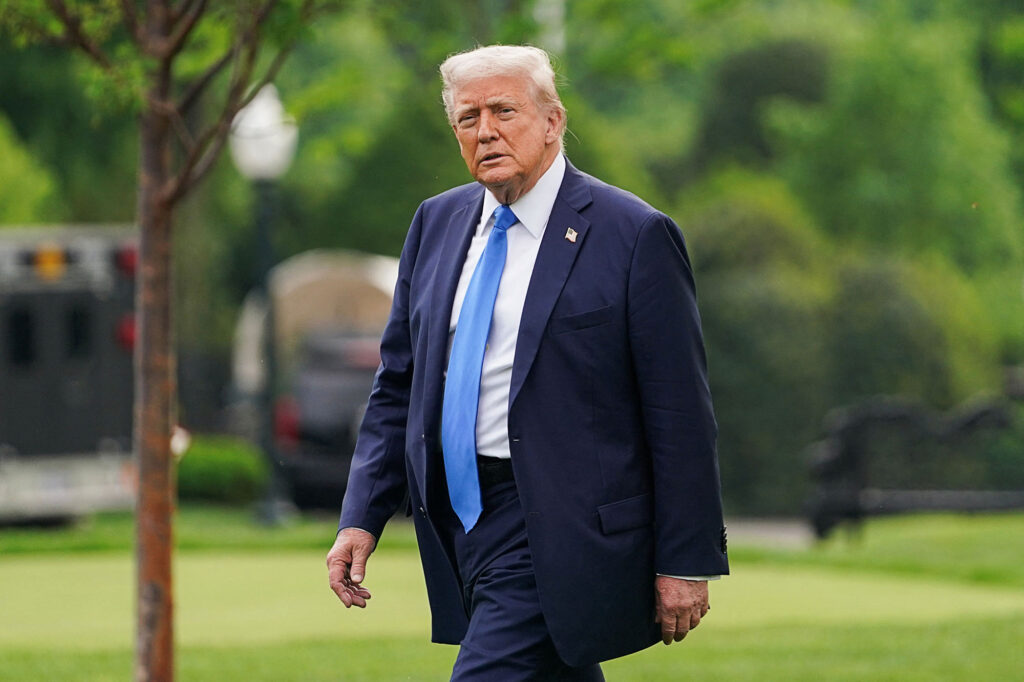🔴 Website 👉 https://u-s-news.com/
Telegram 👉 https://t.me/usnewscom_channel
President Trump downplayed the significance of potentially empty store shelves at his Wednesday Cabinet meeting.
He said of goods from China that might go missing in the trade war, “much of it we don’t need.”
Then, he elaborated the point: “Well, maybe the children will have two dolls instead of 30 dolls, you know? And maybe the two dolls will cost a couple of bucks more than they would normally.”
At that moment, Trump surely made history: He must be the first president in history to say publicly that his policies will deprive American children of toys.
The American Girl Disney Princess Cinderella Doll may be collateral damage in a trade fight that is supposed to reduce our strategic dependence on China.
What Trump was ultimately dismissing is abundance, which is one of the marvels of our system.
Fewer choices at a greater cost — whether of dolls or other goods — simply means a lower standard of living.
The Human Progress project at the Cato Institute calculated “the time price” of various goods, or how long someone had to work to buy them, from 2000 to 2024.
The time price of toys dropped by more than 88% over the period.
In other words, the work that it took to afford to buy one toy a quarter-century ago would buy almost nine toys today.
This is important, not because we want children to have nine times as many toys as they did in 2000, but the reduced time devoted to buying a toy can be used to buy something else (clothes, sports equipment, art supplies), or to work less.
This same dynamic holds across the board. Mark Perry of the American Enterprise Institute looked at the time price of 11 basic household goods from the 1950s to 2013.
“The typical factory worker in 1959,” he writes, “would have had to work from January 1 until the middle of June to earn enough (pre-tax) income to purchase those 11 appliances, a worker in 1973 would have had to work from the first of the year until the second week of April, and today’s factory worker would only have to work until the end of January to earn income for those 11 appliances.”
This is the process of a society getting richer.
Trump spoke of what we really “need.”
At the end of the day, we don’t need anything except food and shelter.
That doesn’t mean we should be content to settle for less rather than more.
The United States, for instance, has a higher standard of living than Greece.
According to CIA figures, the US had a $74,000 per capita GDP in 2023, and Greece had a $36,900 per capita GDP.
That doesn’t mean that people are dying in the streets in Greece — they just have less and lower-quality stuff.
Until now, everyone would have agreed that that is a bad thing, and we should avoid taking any steps back down the ladder of prosperity.
The vast array of choices we have as consumers is one of the adornments of modern life.
No one walks into a grocery store and looks at the bins in the produce section, sees Red Delicious, Granny Smith, Gala, Honeycrisp, Fuji, and Golden Delicious apples, and thinks, “Oh no, there are too many varieties to choose from.”
Or, consider dolls.
Among the major brands, there are Barbie, American Girl, LOL Surprise!, Bratz, Cabbage Patch Kids, and Rainbow High, all with a dizzying variety of dolls for girls with different interests at all sorts of prices.
We don’t need a central authority telling us which of these dolls are more necessary than others — the market does that.
All of this is off-brand for a President Trump associated with business success and consumerist excess.
It’s more natural for him to be boosterish — we are going to have more dolls at better prices than ever! — than to try to talk people into accepting scarcity.
The sooner he can get out of the position of explaining away what might be imminent shortages and higher prices, the better.
Twitter: @RichLowry
